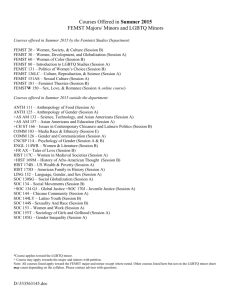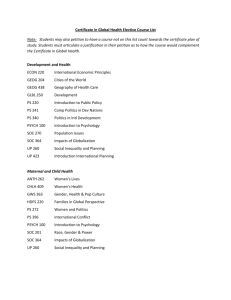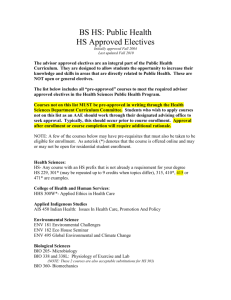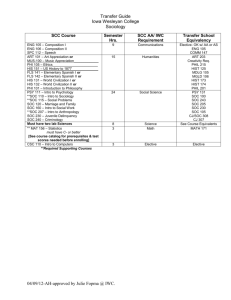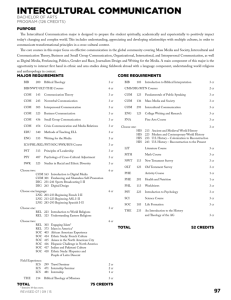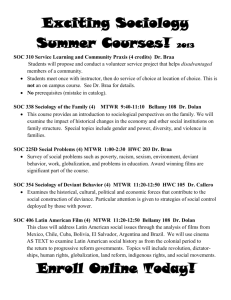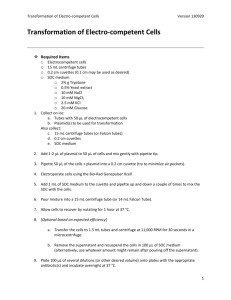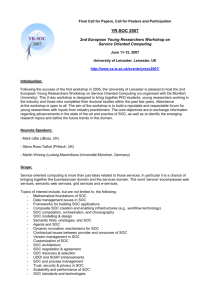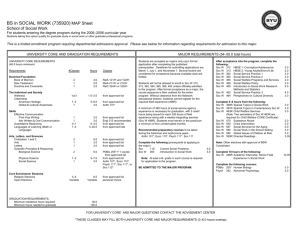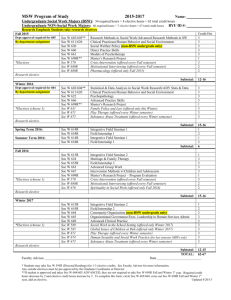Efficacy of Healing Touch in Stressed Neonates
advertisement
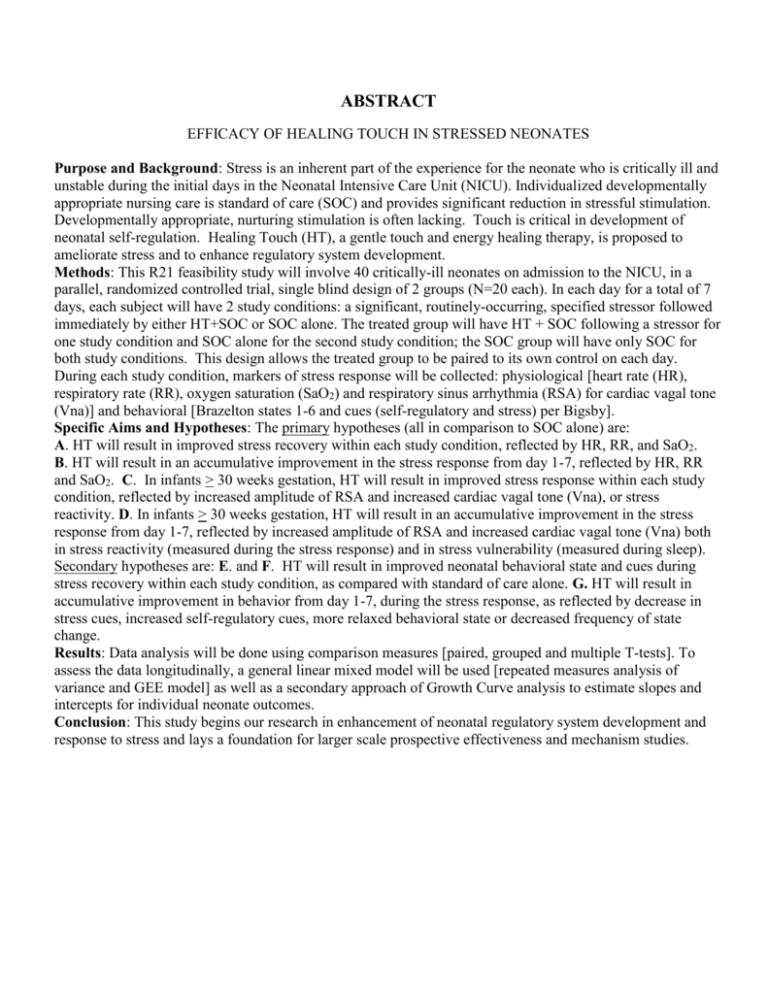
ABSTRACT EFFICACY OF HEALING TOUCH IN STRESSED NEONATES Purpose and Background: Stress is an inherent part of the experience for the neonate who is critically ill and unstable during the initial days in the Neonatal Intensive Care Unit (NICU). Individualized developmentally appropriate nursing care is standard of care (SOC) and provides significant reduction in stressful stimulation. Developmentally appropriate, nurturing stimulation is often lacking. Touch is critical in development of neonatal self-regulation. Healing Touch (HT), a gentle touch and energy healing therapy, is proposed to ameliorate stress and to enhance regulatory system development. Methods: This R21 feasibility study will involve 40 critically-ill neonates on admission to the NICU, in a parallel, randomized controlled trial, single blind design of 2 groups (N=20 each). In each day for a total of 7 days, each subject will have 2 study conditions: a significant, routinely-occurring, specified stressor followed immediately by either HT+SOC or SOC alone. The treated group will have HT + SOC following a stressor for one study condition and SOC alone for the second study condition; the SOC group will have only SOC for both study conditions. This design allows the treated group to be paired to its own control on each day. During each study condition, markers of stress response will be collected: physiological [heart rate (HR), respiratory rate (RR), oxygen saturation (SaO2) and respiratory sinus arrhythmia (RSA) for cardiac vagal tone (Vna)] and behavioral [Brazelton states 1-6 and cues (self-regulatory and stress) per Bigsby]. Specific Aims and Hypotheses: The primary hypotheses (all in comparison to SOC alone) are: A. HT will result in improved stress recovery within each study condition, reflected by HR, RR, and SaO2. B. HT will result in an accumulative improvement in the stress response from day 1-7, reflected by HR, RR and SaO2. C. In infants > 30 weeks gestation, HT will result in improved stress response within each study condition, reflected by increased amplitude of RSA and increased cardiac vagal tone (Vna), or stress reactivity. D. In infants > 30 weeks gestation, HT will result in an accumulative improvement in the stress response from day 1-7, reflected by increased amplitude of RSA and increased cardiac vagal tone (Vna) both in stress reactivity (measured during the stress response) and in stress vulnerability (measured during sleep). Secondary hypotheses are: E. and F. HT will result in improved neonatal behavioral state and cues during stress recovery within each study condition, as compared with standard of care alone. G. HT will result in accumulative improvement in behavior from day 1-7, during the stress response, as reflected by decrease in stress cues, increased self-regulatory cues, more relaxed behavioral state or decreased frequency of state change. Results: Data analysis will be done using comparison measures [paired, grouped and multiple T-tests]. To assess the data longitudinally, a general linear mixed model will be used [repeated measures analysis of variance and GEE model] as well as a secondary approach of Growth Curve analysis to estimate slopes and intercepts for individual neonate outcomes. Conclusion: This study begins our research in enhancement of neonatal regulatory system development and response to stress and lays a foundation for larger scale prospective effectiveness and mechanism studies.


